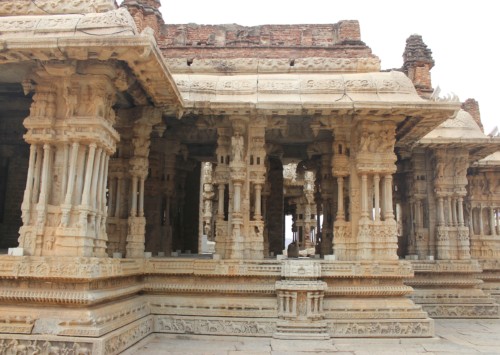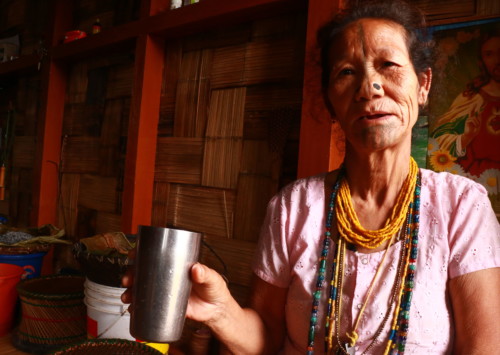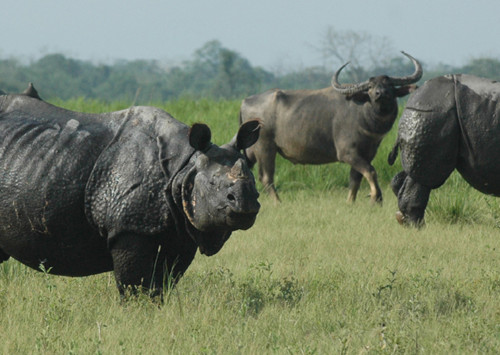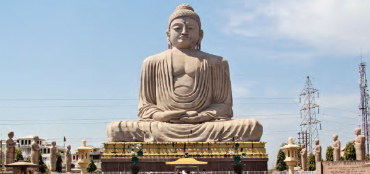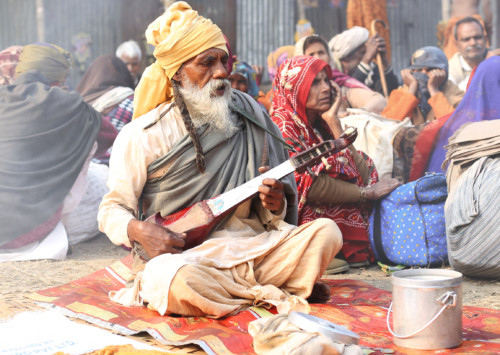Fascinating Hampi
India & You
March-April 2017
Hampi is one of the most extraordinary archaeological sites in India. Here, it is believed, once flourished the legendary kingdom of Kishkinda, from the Hindu epic, Ramayana. Today, the site harbours a fascinating mix of Hindu mythology and historic events, and a peaceful life in the neighbouring villages.
The rugged and uneven steps of a stone staircase, painted in white, slither their way up to the summit of a strange rocky hill. The tiring ascension of the stairs leads to a small temple of Hanuman, the monkey-god of the Hindu mythology. Inside, a guru, naked torso and colourful marks sprawled across the forehead, converses peacefully with his young disciples, sitting cross-legged. The sight is riveting and compels one to share their calm demeanour.
Farther away, a series of mountains, rose and ochre tinted, stand out; their rocks stacked one on top of the other in a random balance. The deep green of the palm and banana trees is in sharp contrast to the fluorescent shine of the rice fields and the silver-gray of the Tungabhadra River flowing at the foot of these mountains.
These spectacular decors forming the backdrop and rich vegetation surrounding the site, Gopuram – the ornate pyramidal towers mounted over the gate of the temples – are the first to catch the eye of a visitor. Gopuram is one of the many vestiges of the monumental site of Hampi, located in the northern part of the south-western Indian state of Karnataka.
The land of gods
The chaotic, savage, yet gorgeous landscape stimulates the imagination. Here, every rock and every stone seem to hide in its heart a story. And, as the legend goes, these hills, awash in heavy winds and dominating over the valley, saw the birth of the very courageous, loyal and intelligent monkey-god, Hanuman, in the mythical kingdom of the monkeys, Kishkinda. It was here that Hanuman met Lord Rama, one of the ten incarnations of Lord Vishnu, and his brother Lakshamana, both treading though the forests in search of their beloved Sita, wife of Lord Rama, kidnapped by Ravana, the demon-king of Lanka (modern day Sri Lanka).
At the summit of the Matanga Hill, the highest hill of Hampi, Lord Rama would meet the monkey-king, Sugriva, who would promise the former his army of monkeys to help find Sita, in return for Rama’s help in claiming back his throne usurped by his rebellious brother Vali.
The Lords would then follow pieces from the veil of Sita – which they believed she left behind to let her saviours know of her route – till the riverside.
From here onward, the mighty army of monkeys would take Lord Rama to Sita – imprisoned on the island of Lanka – by creating a bridge, held afloat by the name of the Lord Rama scribbled on each rock. The fascinating site of Hampi was thus born!
The saga can be traced in the epic poem of Ramayana, which is, along with the Mahabharata, one of the fundamental works of Hinduism.
The kingdom of the monkeys is very well alive and present, even today, in Hampi, as these distant ‘descendants’ of Hanuman, can be seen in the middle of these vestiges and temples.
This is also the place of union of Lord Shiva and Goddess Parvati, where then formed a water reserve, surrounded by two temples. Together, the site constitutes today one of the four Sarovars, a sacred Hindu bath, that are situated on four cardinal points of India.
I walked through the beautifully done Rajwada which today is not occupied but maintained by the current descendants of the royal family.


